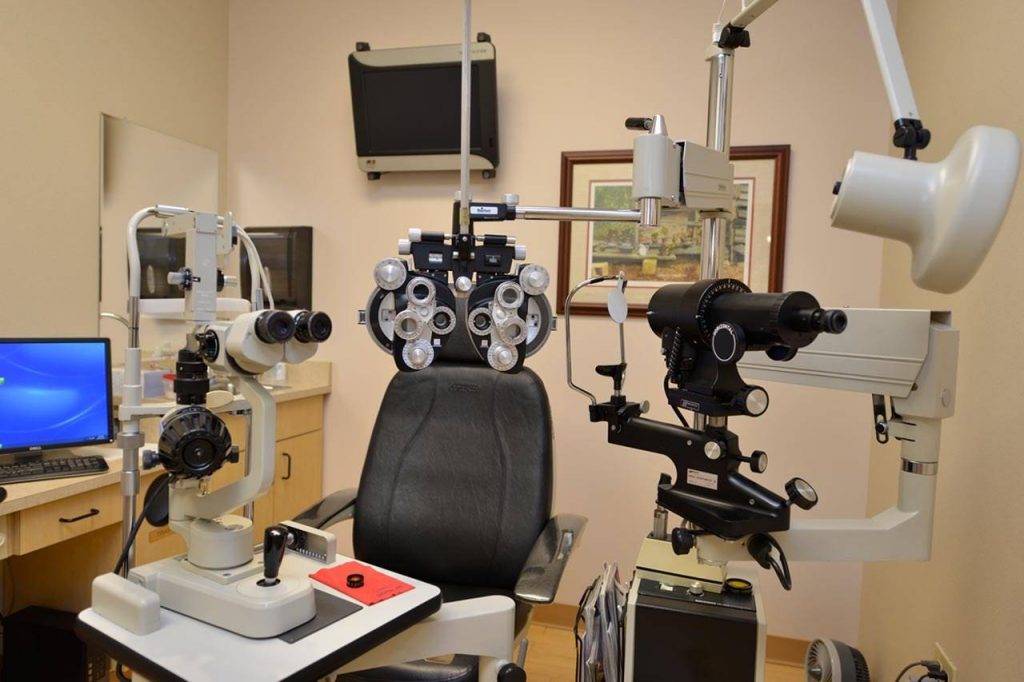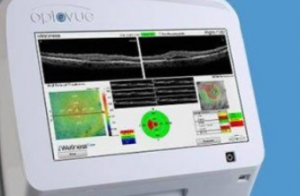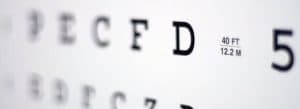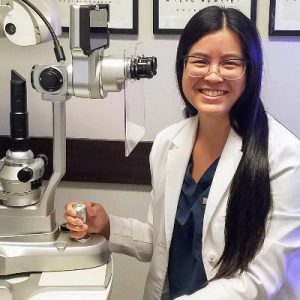The Oxford Handbook of Ophthalmology estimates that almost 25% of the entire world population lives with some kind of refractive error.
But don’t worry if you are 1 out of the 4 of the global population that has a refractive error – all this means is you need to see an optometrist and might need to wear glasses or contact lenses.
Refractive errors can only be diagnosed with a comprehensive exam by an eye doctor or optometrist.
What is a refractive error?
A refractive error occurs when light entering the eye is not focused correctly, through the lens or cornea, onto the retina at the back of the eye.
The main outcome of this focusing error is blurry vision, either at distance or close up. Other signs are headaches, eye strain or double vision.
Refractive errors can occur for a number of reasons, including:
- Length of the eye overall
- Shape of the cornea or lens
- Inability of the lens to adequately change focus
The four most common refractive errors are: myopia (nearsightedness), hyperopia (farsightedness), presbyopia and astigmatism.
Diagnosing refractive errors
Detection and diagnosis of a refractive error is done as part of a routine comprehensive eye exam. During the eye exam, your eye doctor will do what is known as a refraction.
Refraction is the process by which the optometrist determines how your eyes focus and if glasses or contact lenses are required.
There are many parts to the refraction process:
Step 1: Auto-refraction or retinoscopy
This first step of refraction measures your distance vision and involves either shining a light into your eye or using computerized equipment, known as an auto-refractor. This allows your eye doctor to assess how the light acts as it enters your eye, and is refracted by the cornea and lens onto your retina.
This first step provides objective insight to your eye’s focusing abilities, as well as your optical prescription.
Step 2: Lens phoropter
In this step, you will be asked to look through a phoropter, a complex device with multiple sets of lenses and dials.
The phoropter allows your eye doctor to accurately determine your prescription, by relying on your input.
Your eye doctor will ask you to look at an eye chart, as they cycle various lenses, one at a time, in front of each eye, and ask you which lens offers better vision.
SEE RELATED: What Is Corneal Topography?
If you feel your eyesight isn’t what it’s supposed to be, contact your local eye doctor to see how they can help.
Step 3: Close vision test
This final step is performed if the eye doctor feels you might need a different prescription for your close vision, such as for reading, or using a computer or other digital device.
This test will determine if you have presbyopia or require an optical correction for your close vision.
During this eye test, your eye doctor will lower a rod on the phoropter, which places a small vision chart approximately 12 inches from your eyes. Various eye tests will allow the eye doctor to determine the correct strength of lenses required to correct your close vision.
Step 4: Astigmatism tests
Along with the standard eye exam and refraction, accurately diagnosing astigmatism may involve specific eye tests to examine the curvature of the cornea.
Diagnosis of astigmatism often uses specialized diagnostic equipment, such as a keratometer or corneal topography.
Corneal topography provides a digital 3D image map of your cornea, that helps your eye doctor get a more comprehensive view of your eye, and determine the best way to treat your astigmatism.
Step 5: Trial frame
To finalize your optical prescription, your eye doctor may place a trial frame on your face. These are eyeglasses that allow the doctor to insert a range of actual lenses to determine your final prescription.
For children, trial frames are often used in place of the phoropter, as many children feel uncomfortable sitting behind a large phoropter.
LEARN MORE: Guide to Eye Exams
If you feel your eyesight is blurry, or not as clear as it used to be, schedule an appointment with your local eye doctor.
Don’t worry if you are one of the 25% of the global population that has a refractive error.
All this means is you need to see an optometrist and might need to wear glasses or contact lenses.










